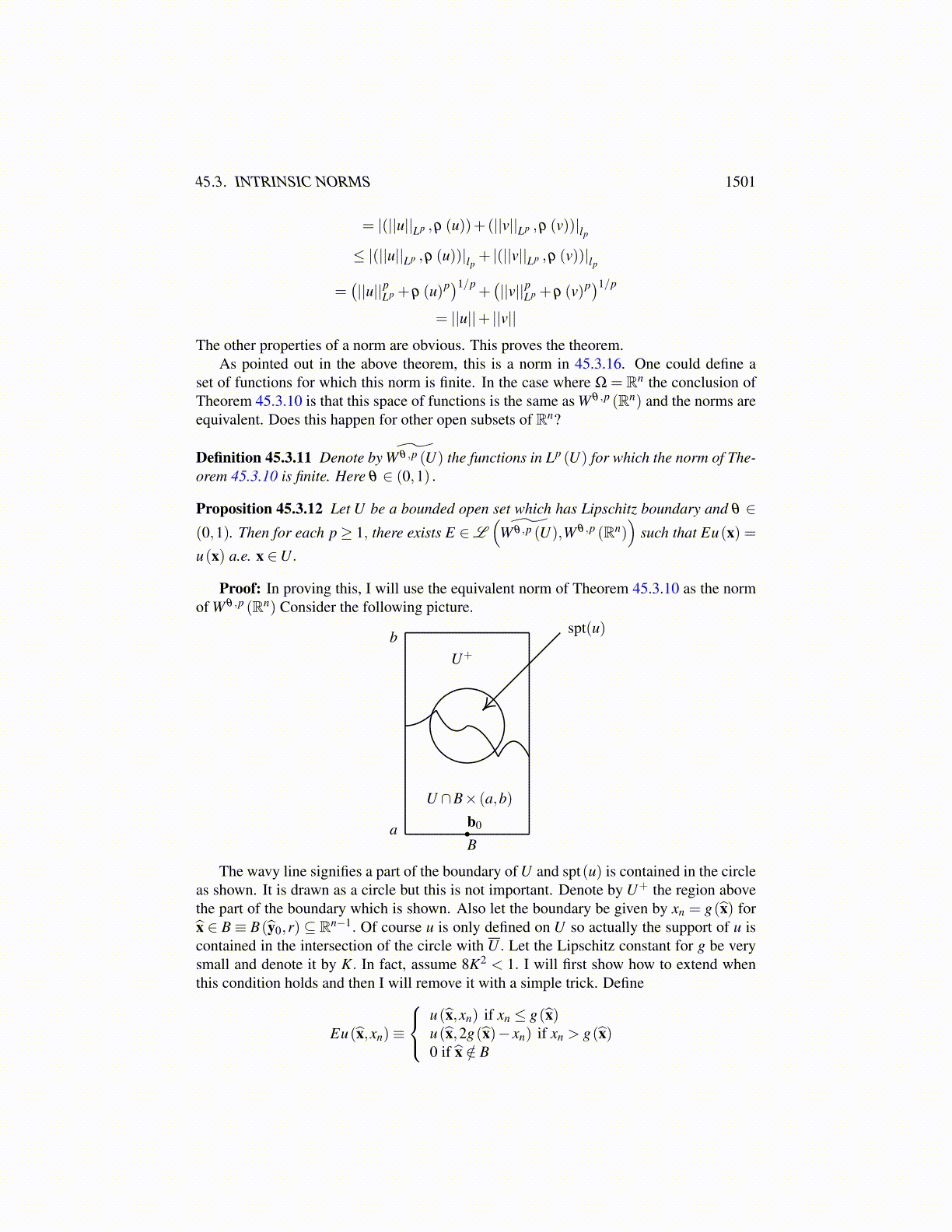
45.3. INTRINSIC NORMS 1501
Now let(s1, · · · ,sn−1) =
(x1− y1, · · · ,xi−1− yi−1,yi+1− xi+1, · · · ,yn− xn)
on the next n− 1 iterated integrals. Then using Fubini’s theorem again and changing thevariables, it equals
1n
∫· · ·∫ 1(
t2 + |s|2) 1
2 (n+pθ)·
|u(s1 + y1, · · · ,yi−1 + si−1,xi + t,xi+1 + si, · · · ,xn + sn−1)
− u(s1 + y1, · · · ,yi−1 + si−1,xi,xi+1 + si, · · · ,xn + sn−1)|p
dy1 · · ·dyi−1dxi · · ·dxnds1 · · ·dsi−1dsi · · ·dsn−1dt
By translation invariance of the measure, the inside integrals corresponding to
dy1 · · ·dyi−1dxi · · ·dxn
simplify and the expression can be written as
1n
∫· · ·∫ 1(
t2 + |s|2) 1
2 (n+pθ)·
|u(x1, · · · ,xi−1,xi + t,xi+1, · · · ,xn) − u(x1, · · · ,xi−1,xi,xi+1, · · · ,xn)|p
dx1 · · ·dxi−1dxi · · ·dxnds1 · · ·dsi−1dsi · · ·dsn−1dt
where I just renamed the variables. Use Fubini’s theorem again to get
1n
∫· · ·∫ 1(
t2 + |s|2) 1
2 (n+pθ)·
|u(x1, · · · ,xi−1,xi + t,xi+1, · · · ,xn) − u(x1, · · · ,xi−1,xi,xi+1, · · · ,xn)|p
ds1 · · ·dsi−1dsi · · ·dsn−1dx1 · · ·dxi−1dxi · · ·dxndt
Now from Lemma 45.3.9, the inside n−1 integrals corresponding to
ds1 · · ·dsi−1dsi · · ·dsn−1
can be replaced withC (n,θ , p)
|t|1+pθ
and this yields
C (n,θ , p)∫R
1
|t|pθ
∫Rn|u(x+ tei)−u(x)|p dx
dtt
=12
C (n,θ , p)∫
∞
0t p(1−θ)
||u(·+ tei)−u(·)||pLp(Rn)
t pdtt